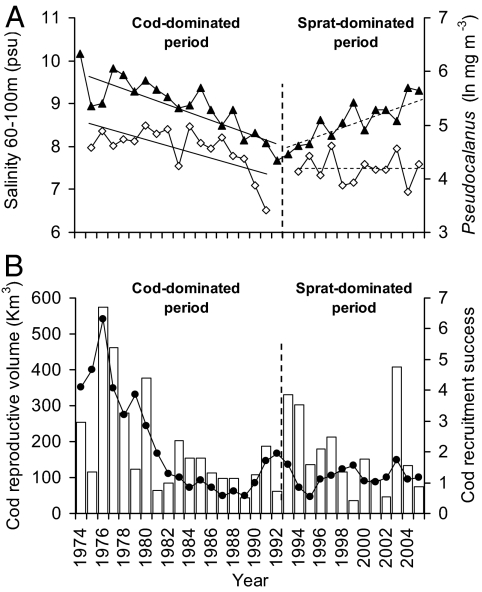Fig. 4.
Potential ecological mechanisms hindering the success of cod recruitment. (A) Trends in salinity (▲) and Pseudocalanus spp. biomass (average spring-summer) (◇) in the central Baltic Sea. Pseudocalanus spp. is one of the main prey for sprat and larval/postlarval cod (30). Salinity between 60 and 100 m of depth was considered here because this plankter occurs mainly in deeper water layers, where it encounters favorable salinity conditions for reproduction (30). Salinity and Pseudocalanus spp. are positively correlated in the cod-dominated period (r = 0.67, P < 0.01), whereas in the sprat-dominated period the correlation disappears (r = −0.51, P = 0.09). Overall relation: r = 0.44, P = 0.02 (r* = 0.17, P* = 0.36). (B) Trends in cod reproductive volume (columns) and cod recruitment success (●). Relation between cod recruitment volume and recruitment success in the cod-dominated period (r = 0.71, P < 0.001) and in the sprat-dominated period (r = 0.27, P = 0.34). Overall relation: r = 0.59, P = 0.001. The vertical dashed lines indicate the time when sprat rose above the abundance threshold without any further reversal (see also Fig. 3). In bold are the significant correlations, at α = 0.05.

